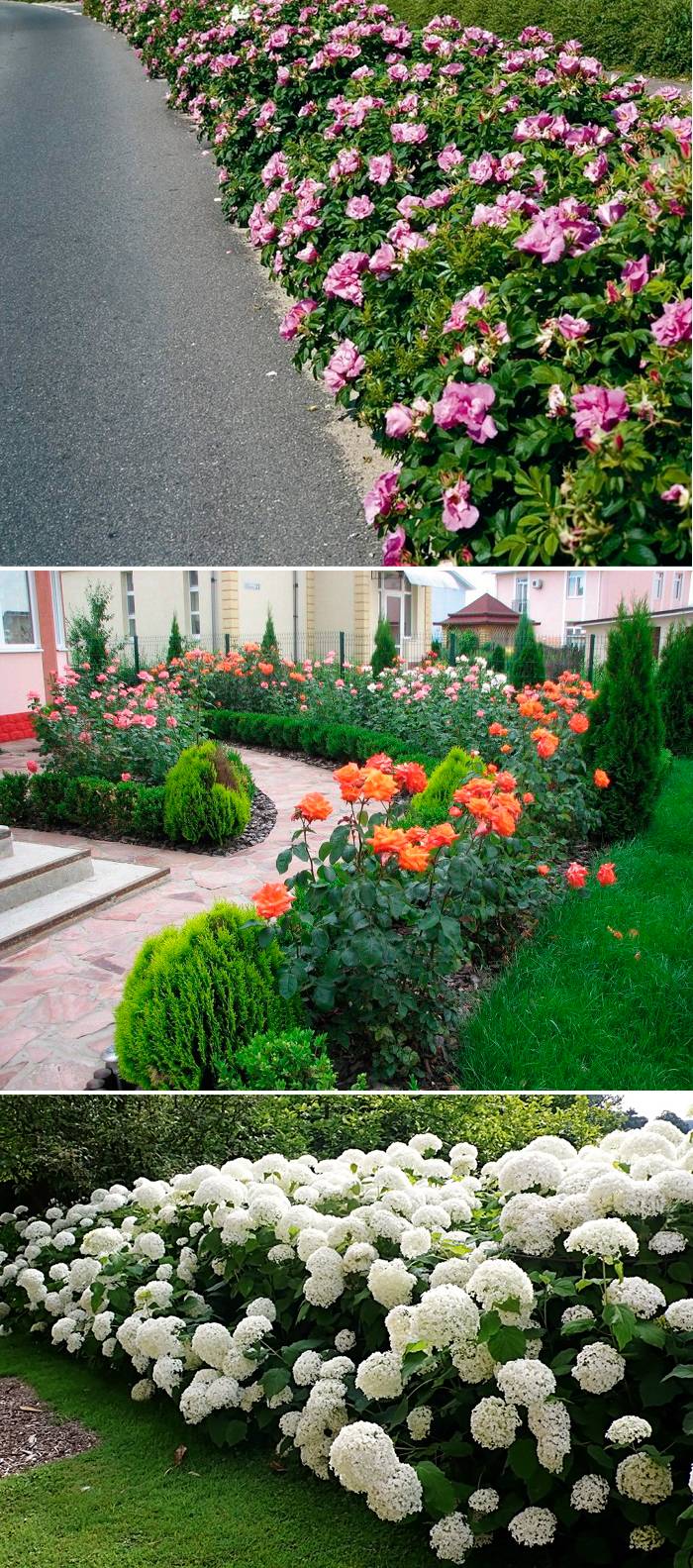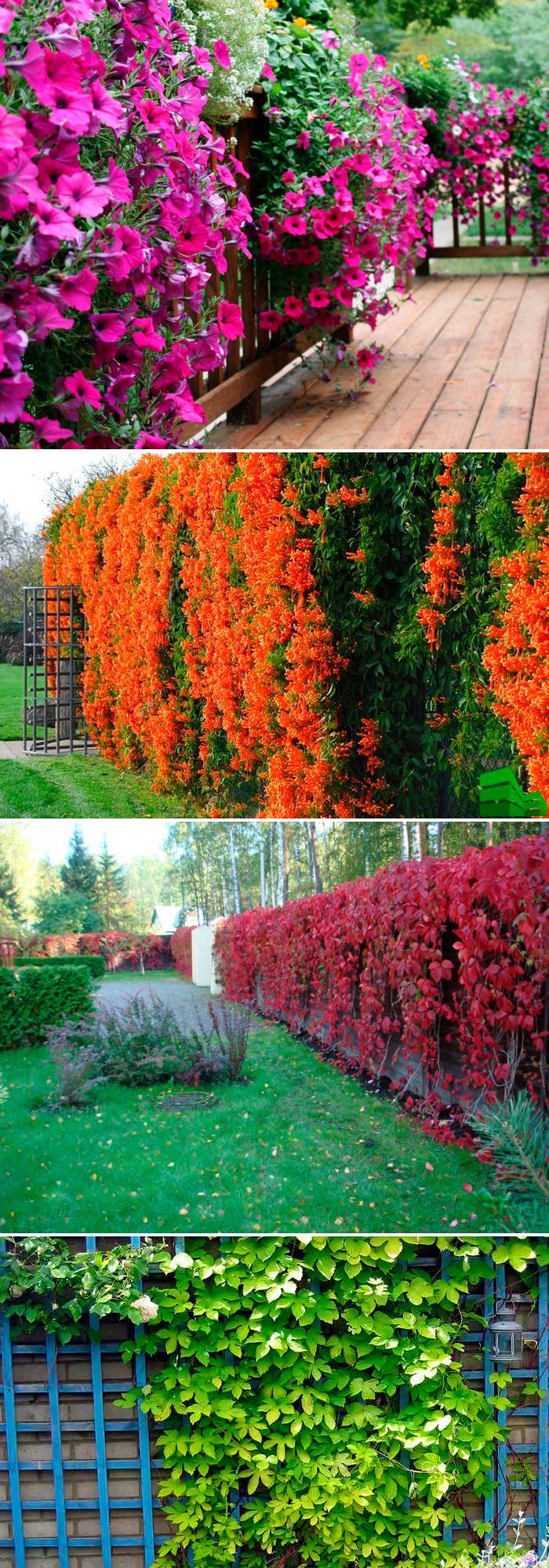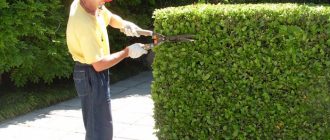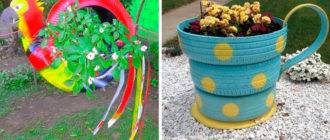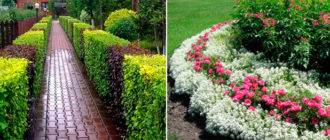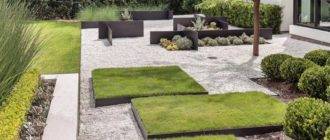A hedge is an element that performs decorative, protective and protective functions. A shield made from suitable plants will decorate the territory for a long time, delighting both you and your neighbors.
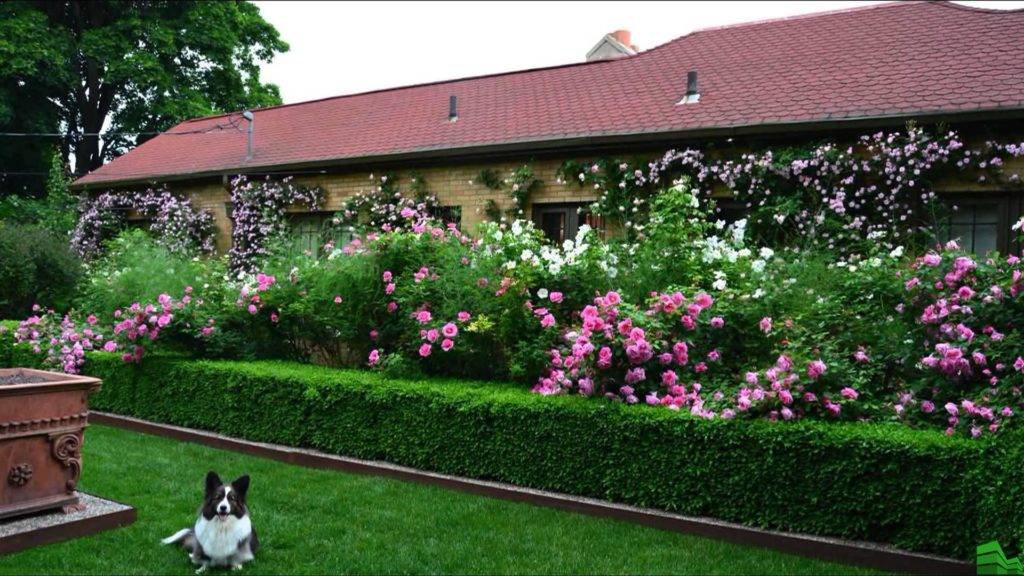
Possible hedge shapes
The choice of form depends on financial capabilities. The list of the most budgetary projects includes a strict solid wall. Most of all you will have to spend on pyramids, arches, lines of fantastic creatures. The list of interesting ideas is constantly growing, due to the wide range of horticultural crops and the imagination of gardeners.
Live curbs
The parameters of this natural structure at the planning stage are determined, guided by the functional purpose and size of the territory. Borders are used to border garden paths, flower beds and lawns.
The maximum height should not exceed 0.5 m. To form a decorative element, low-growing, unpretentious plants are most often used. They must tolerate the climate of the region well.
Such hedges-borders are created from honeysuckle, Thunberg barberry, decorative cinquefoil, lingonberry, boxwood, dwarf caragan, cotoneaster, vesicle, Lawson's cypress.
The list can be supplemented with euonymus. This culture is characterized by slow growth, drought resistance, shade tolerance. Long shoots, spreading along the ground, reach a length of about 3 m. The color can be different.
Karagan is often called acacia. By giving up regular haircuts, the gardener will get an impenetrable hedge.
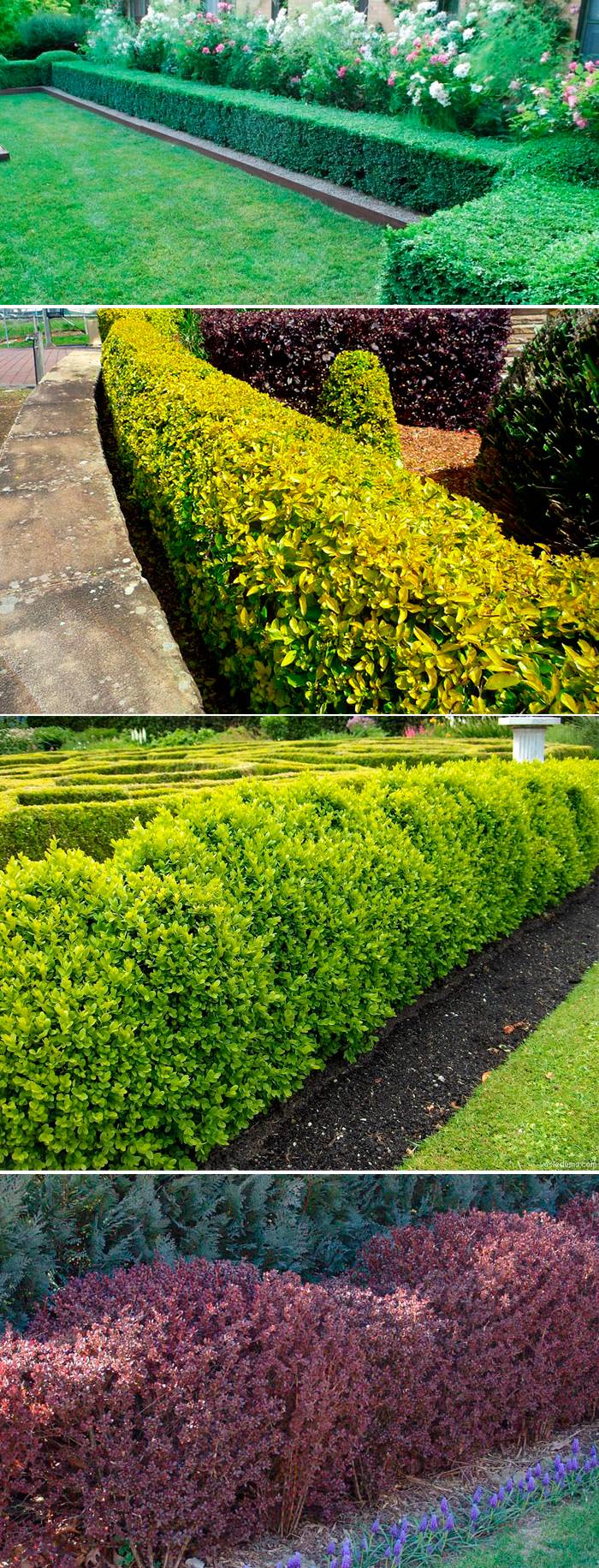
Honeysuckle is considered a semi-evergreen plant. Its main feature is the lodging branches with shiny green oblong leaves. To create a curb, you need support and clipping. The advantages of culture include undemanding soil and thermophilicity.
To create curbs, stunted rhododendrons are often planted. These shrubs prefer well-drained, acidic soils.
Bubble and cypress need to be pruned to create a well-groomed border.
Holly Mahonia looks great when sheared or natural. Its foliage is juicy and shiny. In the fall, the serrated plates turn purple.
To avoid monotony, summer residents choose peppermint, marigold, oregano, parsley, lungwort, kohija and gomfrena.
Framing the recreation area
This idea will not lose its relevance over time. When equipping a recreation area, you need to strive to provide comfort for yourself and your household.
In order for all material costs and efforts to justify themselves, the following rules must be observed:
- For bordering, use shrubs, the height of which is not more than 1 m.
- Plants should be arranged in a wave-like and symmetrical manner.
- It is best if the recreation area is in cool shade in the southwest.
- The selected place must be protected from strong winds and drafts. Moreover, it should be spacious.
- The landscape design of the area allocated for recreation is decorated in the same style as the entire site.
The finishing touch can be a duet of lawn grass and lush bright vegetation. By the way, keep in mind that the lawn is difficult to care for. On our website you can read about 7 alternatives to it.
Flower wall
This live composition doesn't take up much space. If you have difficult terrain at your dacha, this is an excellent choice.
Disembark as usual. Plant the plants in multiple rows.
Make a background in the background, leave the most interesting specimens in front.
A recreation area can be organized next to the flower garden. Supplement it with a bench, platform or gazebo. These versatile decorations should be surrounded by tall plants.
You should also take into account that:
- the edges of the terrace should be densely planted;
- the contrast of stone, green plants, brightly colored buds is an advantage that should not be ignored;
- for planting, it is necessary to use fast-growing shrubs.
Narrow hedges
For their cultivation, willow twigs are most often used. They are cut according to the planned configuration. The next step is digging a trench. Its depth should be 30 cm. Fertile soil is poured into the finished ditch.

Separated cuttings are kept in a stimulator for several days before planting. Willow rods are attached to fittings or pipes using wire. This should be done in the spring.
This design resembles a braided tyn in appearance. Other garden crops can be planted near the fence. In this case, ampelous, garden and field plants are most often suitable. Thus, you can create a rustic and old Russian style. The original composition will enliven the landscape design.
Hedges at different levels
Multilevel fences are formed from plants of different heights. This design looks more interesting than the classic version. You can plant poplar, maple, linden, juniper. Also, do not forget about evergreen shrubs.
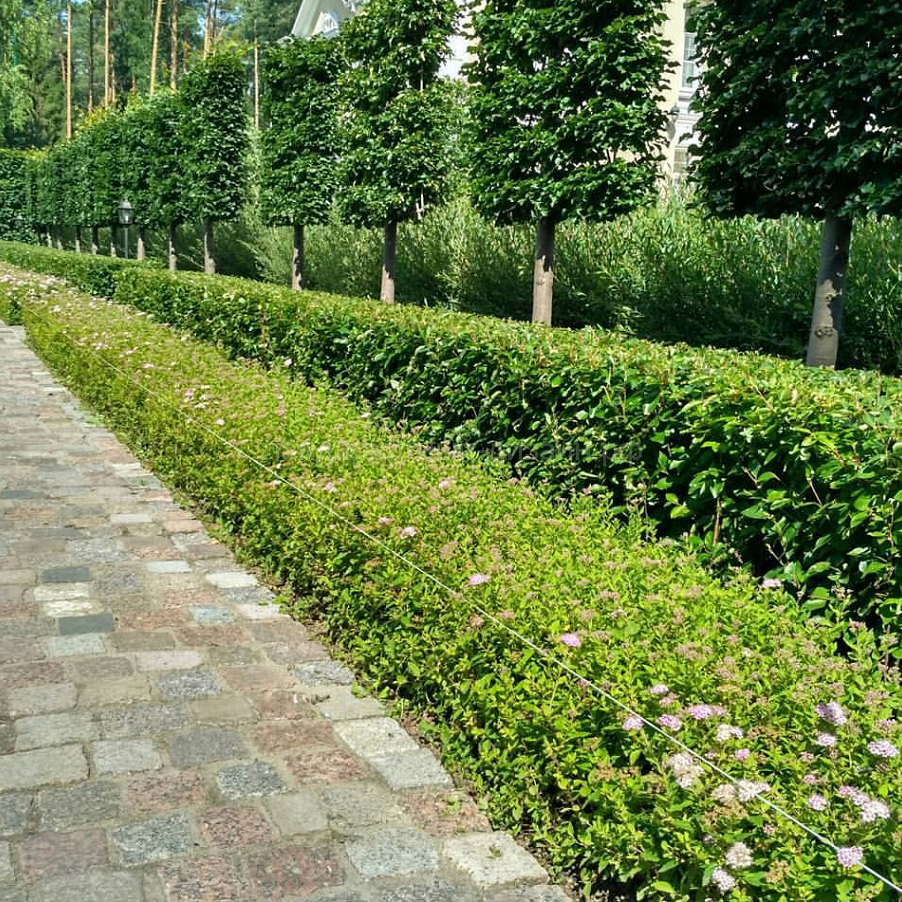
Plants planted in this way will not suffer from lack of nutrients and light. This is due to differences in the structure of the root system and the size of the crown. Such a hedge is best done in a large area.
Garden bonsais
This concept can be translated as "a tree on a tray." Thanks to the use of unique techniques, even an inexperienced gardener will be able to grow dwarf trees and shrubs. As an initial plant, you can use one that is able to winter outdoors. Miniature pines, cypresses, junipers, cherries, apple trees, plums and pears will add color to the garden. Aged specimens are rejuvenated by cutting.
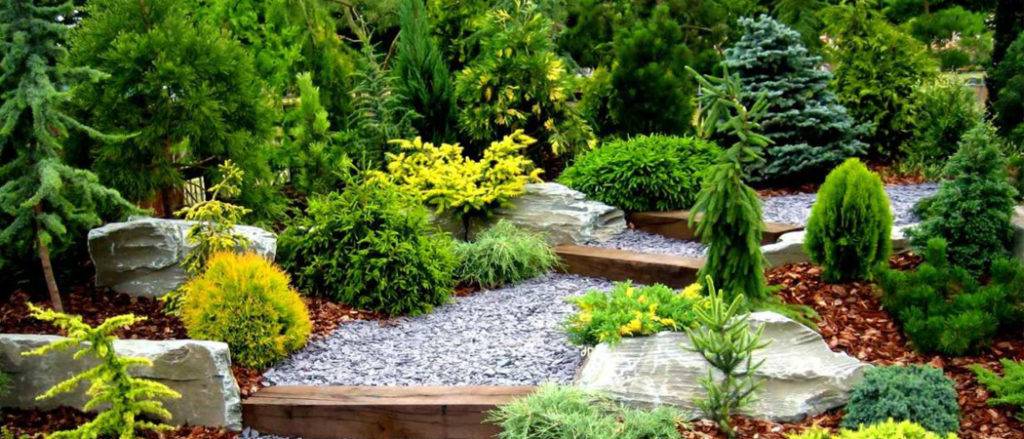
Curly hedge
A support is required to form a green fence. The material for its manufacture can be wood, steel wire or chain-link. Grapes, ivy and other liana-like plants are planted near the nets.
Ideas for combining plants, fences and various objects
Horticultural crops are often combined with wooden modules, large stones, pillars and gabions. The old fence also does not need to be demolished. It can be used as a support for flower containers and climbing plants. To achieve the maximum decorative effect, wisteria, climbing roses, honeysuckle, grapes, clematis, grapes and hydrangeas are planted.


